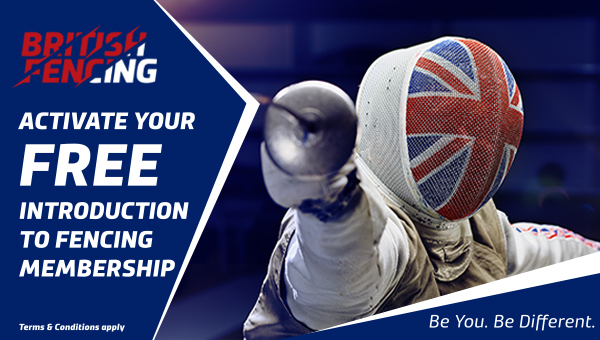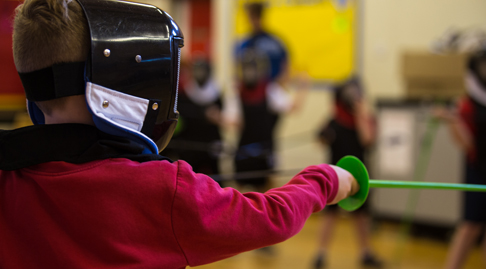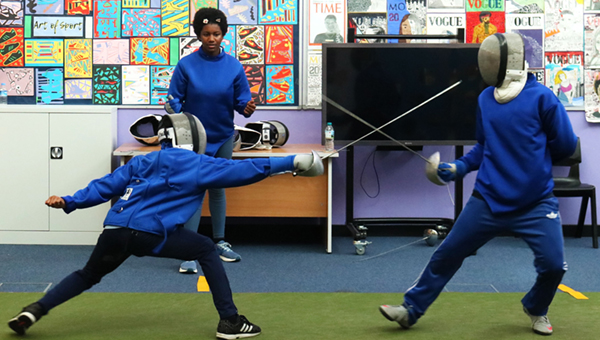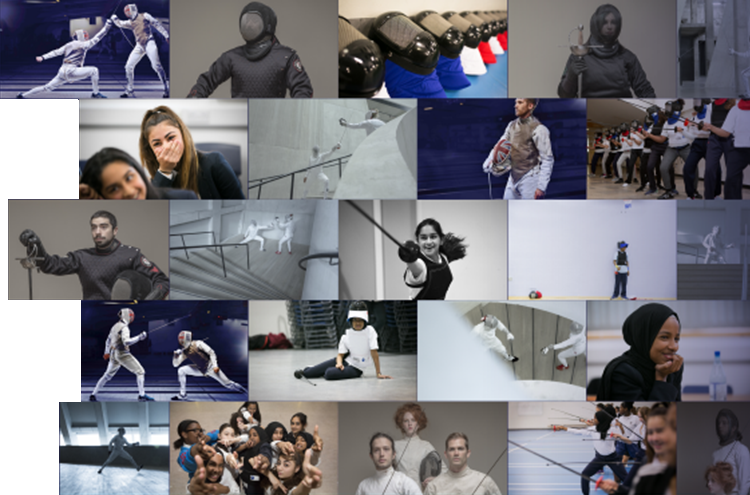

Many people participate in fencing with disabilities and there is also the option to participate in Wheelchair Fencing at clubs and also at competitions, right up to the Paralympics.
British Fencing (BF) is focused on ensuring all fencers no matter their background, impairment, or disability are treated equitably and fairly when participating in all levels in fencing.
“You’re disabled under the Equality Act 2010 if you have a physical or mental impairment that has a ‘substantial’ and ‘long-term’ negative effect on your ability to do normal daily activities.”
– The UK Government
There are two schools of thought or ‘models’ of disability, the social model and medical model. The social model of disability says that it is the barriers in society, such as inaccessible buildings or people’s attitudes, that create disability. Disabled people have choice, control and independence in society when these barriers are removed. Information is widely available online but organisations like Scope (www.scope.org.uk) have more on this topic.
Disability isn’t just about sitting down in a wheelchair, many disabled people participate in sport and physical activity without needing adapted equipment or training. Some people may need adjustments in the way they learn or communicate but not in the built environment. Even if you can’t see it immediately, because the disability is “hidden”, it is likely that disabled participants are already training at your clubs, our recent Equality survey results showed that 12% of members considered themselves as disabled.
One of the biggest barriers to disabled people participating is the misconceptions and presumptions on what is and isn’t possible for a disabled participant, including in sport. Fear or worries about the imagined risk, of saying or doing the wrong thing get in the way of being welcoming of disabled participants, and the depictions in the media, or lack of images of disabled people don’t help this at all.
Let’s change perceptions, and build a more equitable sport.
Para Fencing – The disciplines of Fencing that are adapted for Paralympic Eligible disabilities. Longer term this can include visual impairment for instance.
BF will refer to any licensed events that include wheelchair fencing that require classification as ‘para fencing events’.
Para Fencers – Paralympic Classified Fencers that compete in World Para Fencing events (includes all that represent GBR).
Our squad of para fencers is currently the most successful squad in the history of Para Fencing.
We use this term to refer to paralympic classified fencers on the Paralympic pathway and those in the World Class Programme, including those participating in World Para Fencing and Paralympic events.
Wheelchair Fencing – This is the discipline of fencing that requires the use of specialised Wheelchair equipment. Wheelchair Fencing refers to the sport. Classification is not required.
“The British Open is a Wheelchair Fencing Competition”. BF will refer to any licensed events that include wheelchair fencing events that are not requiring classification as ‘wheelchair fencing events’.
Wheelchair Fencers – Fencers that participate in the sport of Wheelchair Fencing. There is no requirement to be classified.
We do not restrict anyone from referring themselves as a wheelchair fencer, in fact we would encourage anyone at any level of the sport, whether it be using a SwordSeat or using a fixed frame and wheelchair.
“We run wheelchair fencing classes at our club, using the SwordSeat because it’s cheaper.”
This term can be used interchangeably when talking about Para fencers who compete in the Wheelchair Fencing competitions.
It can also be used for fencers who are competing in BF competitions but are not yet classified, or do not meet the classification requirements.
Seated Fencing – The activity of fencing sitting down. All fencing activity in a SwordSeat.
“Trying fencing sitting down can be the first step on the pathway to participating in the sport of Wheelchair Fencing.”
At BF we use the term Seated Fencing:
To market the sport to a wider catchment of individuals and potential partners who can support the growth of the sport.
When we are working with clubs to introduce fencing for the first time to new people who have no experience of the sport, might not use a wheelchair, are unable to take part in standing fencing, but really want to try the sport. This activity would take place in the SwordSeat (or in a fixed wheelchair and frame if a club has one).
Seated Fencer – An all-encompassing term to describe everyone that sits down to participate in fencing for any reason in any type of seat.
Further info:
This refers to the wider community of fencers who sit in a chair or wheelchair to fence, at the club and national level, but who may not be classified or classifiable as a Paralympic athlete.
To be used when describing the grassroot recreational community activity.
Disability inclusive fencing/Disabled fencer – describes all fencers who have a disability or impairment, and all fencing opportunities specifically for those with disabilities.
Standing fencing/fencer or FIE rules fencing–This is the term used to reference the FIE style of fencing, which is performed standing and is currently in the Olympic games, or any fencing done standing and not specific to a disability or impairment. It’s best not to use the term non-disabled fencing to reference this style, as there are likely many athletes who consider themselves disabled but still take part.
Want to make sure your club is accessible? Find out more: Making a venue accessible and inclusive






Activate your free, 90 day membership to British Fencing today. Membership insures you to fence at any British Fencing club.
Join Today
Does your organisation want to bring fencing to your community? Explore our core coach course, no experience required.
Core Coach
Start your journey to becoming a community fencing coach. Introduce fencing to pupils for as little as £25. Find out more today.
Learn More